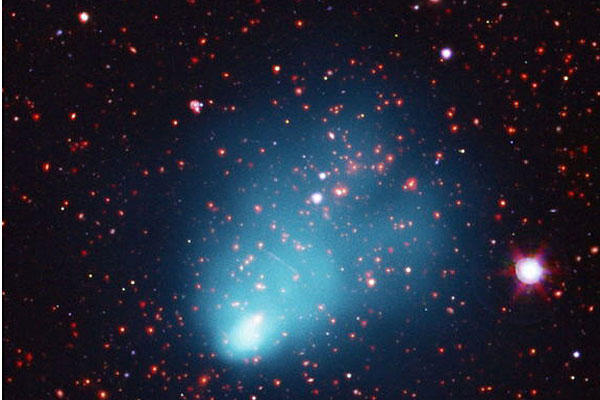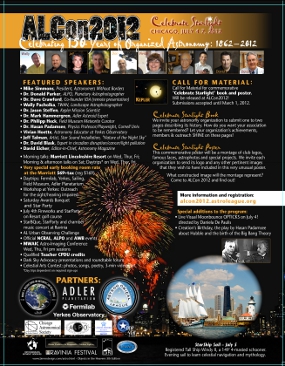El Gordo — which means “the fat one” in Spanish — is officially known as ACT-CL J0102-4915 and “is located more than 7 billion light-years from Earth, at a time when the universe was half its current age,” study co-author John Patrick Hughes at Rutgers University told SPACE.com. The universe is about 13.7 billion years old.
The monster galaxy cluster has mass about 2 quadrillion (that’s 2 followed by 15 zeroes) times that of the sun, making it “the most massive known cluster in the distant universe.”
A galaxy cluster behemoth
Galaxy clusters form through mergers of smaller groups of galaxies. These events depend on the amount of dark matter and dark energy in the universe, and thus could shed light on these enigmas. [See the El Gordo galaxy cluster]
Dark energy seems to make up 73 percent of all the mass and energy in the universe, and is driving the accelerating expansion of the universe. Unseen and as-yet-unidentified dark matter makes up about 23 percent of all the matter and energy in the universe — scientists know it exists because of the gravitational effects it has on galaxies. The regular matter that makes up humans, planets and stars constitutes only 4 percent of the universe.
El Gordo was discovered using NASA‘s Chandra X-ray Observatory in space and the Atacama Cosmology Telescope in Chile. Its Spanish nickname is a nod to the Chilean connection.
The scientists detailed their findings today (Jan. 10) at the annual meeting of the American Astronomical Society here during a presentation that included a separate announcement of the discovery of the most distant galaxy cluster ever seenin the early universe.













